On-Axis Fill {Redux}
For all you lighting/photo techies out there, this post is for you!
My on-axis fill with ring flash posts remains one of the most popular on my blog, appealing to the photography lighting crowd. In this post, I revisit this lighting approach using the PhaseOne 645 DF side-by-side with a Nikon.
In the 35mm DSLR world, on-axis fill offers a medium format feel. Would the images shot with medium format digital look like large format digital?
Let’s see.
__________
Guys, Garage, Root Beer
We met on a Friday morning and set up equipment while bantering on and on about guy camera technicals.
These moments make me appreciate no longer being trapped in cubical walls.
We shot lots of variations, spending more of the time troubleshooting setting things up than shooting. You know, checking cord connections, dead batteries, light positions, and lighting ratios. Good thing to do this sort of thing every once in a while. Just because it worked on the last gig doesn’t mean it will on the next.
Exercises like these develop abilities for setting up equipment without much thinking, while talking, then troubleshooting…all without the subject knowing. Consider it a 1/4 mile sprint for the right-side of our brain.
Doesn’t get much better than drinking Chicago style Goose Island root beer with guys in a garage (gotta love the stuff). And burping our names. 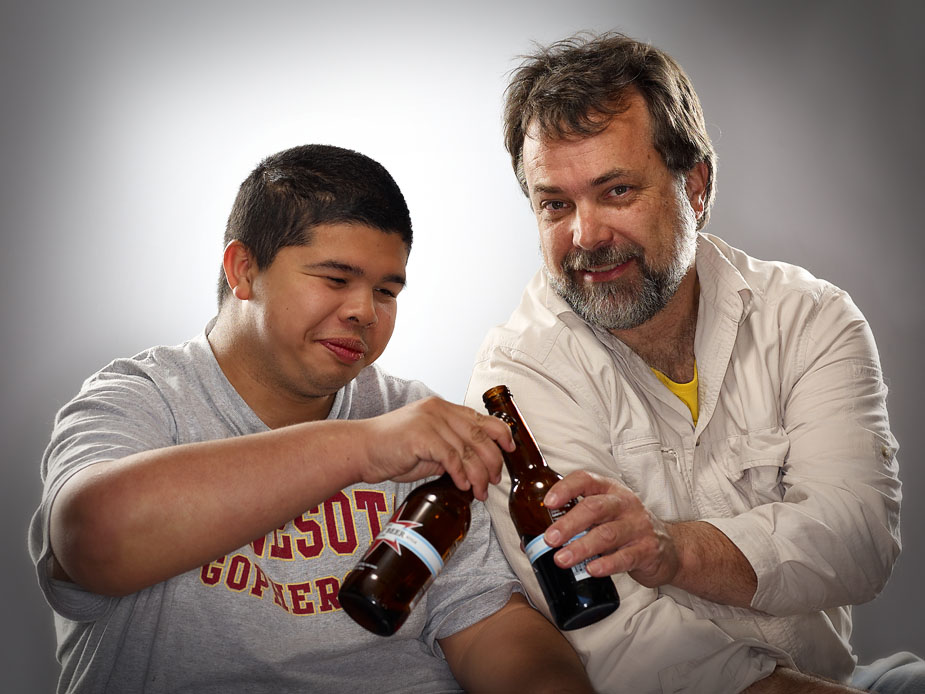
It’s good to not take ourselves sooo serious. Love this series: 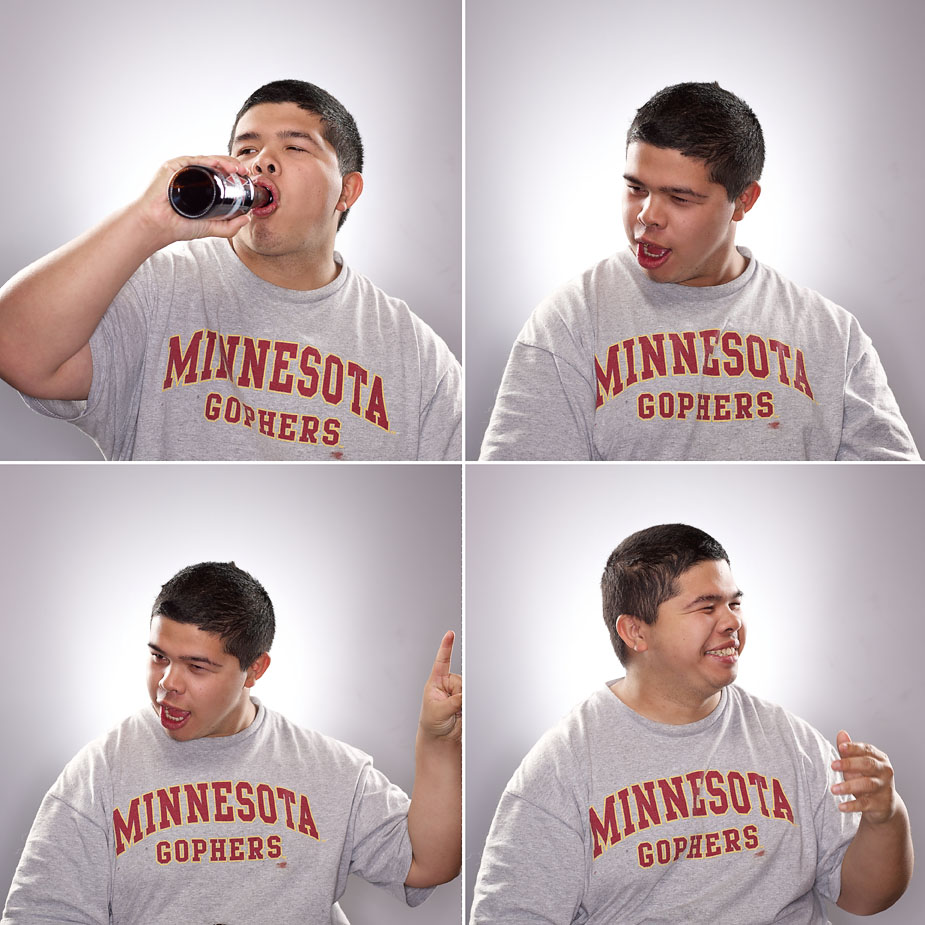
This style of studio lighting requires minimal retouching since everything is nailed in camera. That’s the way I like it, especially shooting in studio where everything is controlled. If I can’t nail it in a precise environment, I never will when shooting out on a Hawaiian beach. We dialed down the background light and made a few adjustments before making this final image: 
Lighting for Shadows
One was used as a main light up front and high, with the other two as rims positioned on each side in back. The special sauce? You guessed it: the ring flash serving as on-axis fill. That brings up the shadows to a painterly effect.
I lit my subject from behind using two Alien Bee 800s, each in a gridded strip bank to contain and direct the light on the edges of my subject (1/2 power). Those highlights draw the eye right toward the subject from afar, important in this style of commercial photography. Would have used an Alien Bee 1600 as the main, but I fried the strobe changing the bulb. Oops. Comic relief outtake illustrated at the end of my last behind-the-scenes video.
A gridded speedlight for background completed this five-light setup: key, two gridded strip banks for rims, ring flash fill, and background kicker. SOC via Nikon D700: 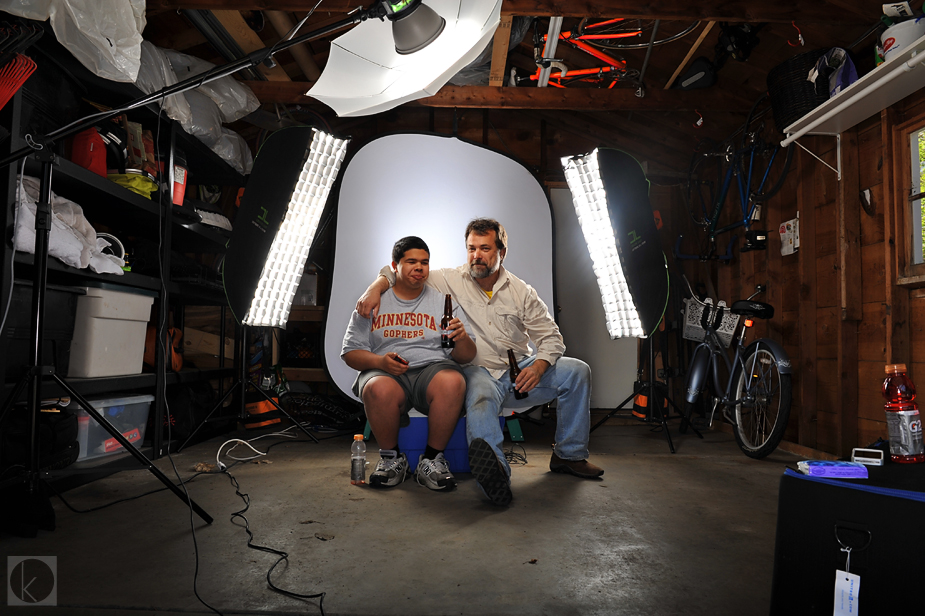
Digital shoot-off 35mm vs. MF
First off, notice the color differences in these two pictures. If you ask me, there’s a night and day comparison when it comes to rendering skin tones (ahem, fur tones). These pictures have gotta be worth at least 1,000 words. There’s also a much smaller depth of field with the medium format than the 35mm, given the same f/stop and camera settings. 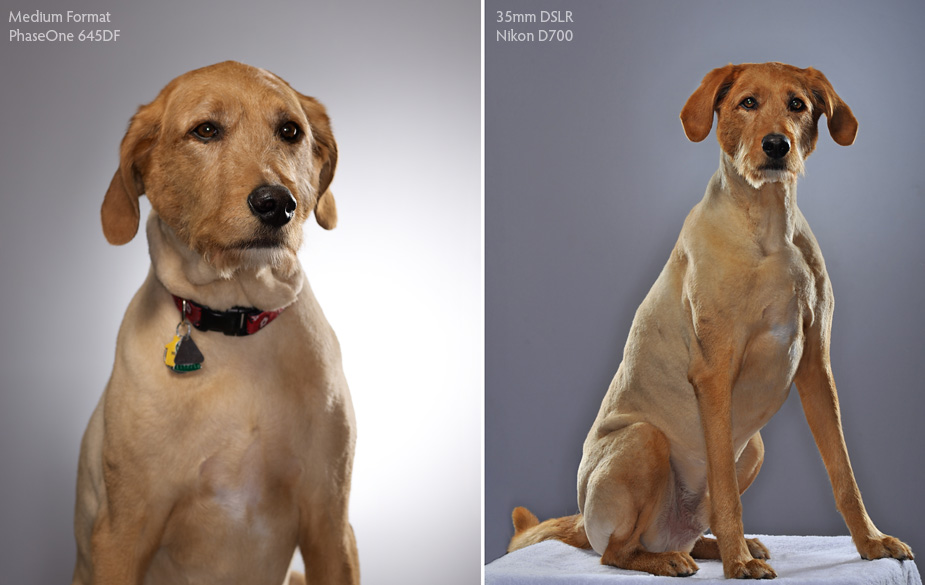
Willy illustrated 2 reasons he dislikes shooting jpeg, both of which add time in post :
- Posterization/Banding Issues. Notice the subtle rings that make the shift in background tonality a bit jaggy? It’s an artifact of raster interpolation, noticeable most in the natural vignette of the background. Not acceptable in my book, especially since it can be fixed by shooting with higher resolution equipment. Good article on how correct the banding here.
- Hard to Clean Sensor Dust. You see it most when shooting at higher apertures like f/16 since the dust becomes more focused. You can clone out in Photoshop, but that takes time.
Neither are issues when shooting with the P1 since the dynamic range is much richer and the back is easy to pop off and clean. 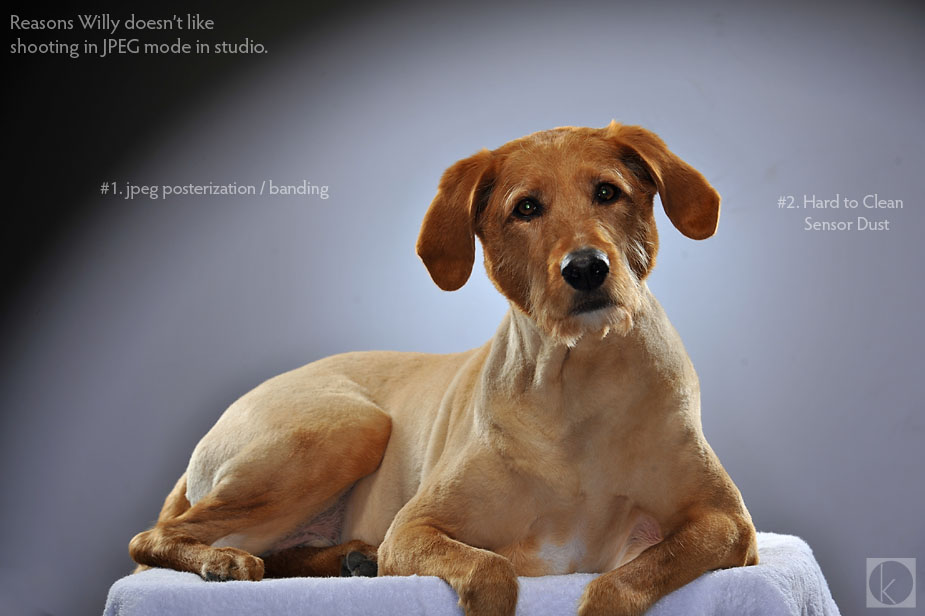
Flash-Sync Catch-Up
As for my platform, shooting the PhaseOne 645 DF at faster shutter sync speeds opens a few creative doors. Most Canon 5D Mark II users slam up against the 1/160th before seeing dark lines from unlit portions of the image. Most medium format film loath 1/125th sec flash sync.
I’m pretty much free to shoot up to 1/800th of a sec, which gives me a few extra stops of ambient light to shield. This translates into a shallower depth of field, quicker recycle time, lower power strobes (read: cheaper): all good things when it comes to studio shooting.
On this setup, PocketWizard II’s sync to about 1/400th. PW MultiMaxes sync to 1/500th. The V-Grip Air syncs at 1/800th with my P30+ digital back and 1/1600th when used in combo with the IQ backs and the 645DF.
However, 1/250th at f/8 at ISO 100 did the trick. I could have pushed the sync, but avoided the diffraction resulting from higher apertures. I jumped in the frame: 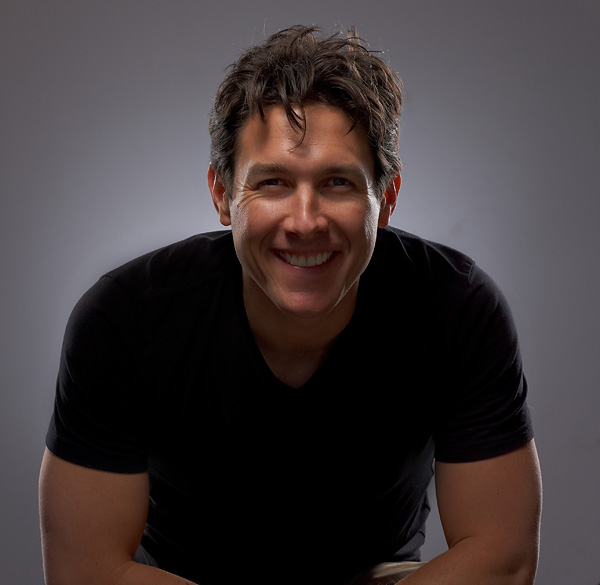
On Being a Daymaker
The golden moments happened quickly. Nothing here I would claim as award-winning, but then again it was all about the experience from the get go.
I asked Ben his favorite part of the morning shoot in the garage. His response, “Just being together with you all and my dog. That’s all.”
That made my week.
Hearing that little gem reminded me of the importance of sharing quality time with folks who really appreciate it, especially in this busy time-equals-money world. Seeing things through his eyes reminded me once again how important it is to sloooow down, take the time to meet new friends, and be happy playing together.
It seems we not only made his day, but he made ours.






Pingback: My new skill | Kern-Photo
Pingback: Einstein 640 vs Profoto D1 w/ PhaseOne IQ {head to head} | Kern-Photo
Pingback: Skol, Norway! {Landscape Photography} 1/3 » Kern-Photo - Kern-Photo